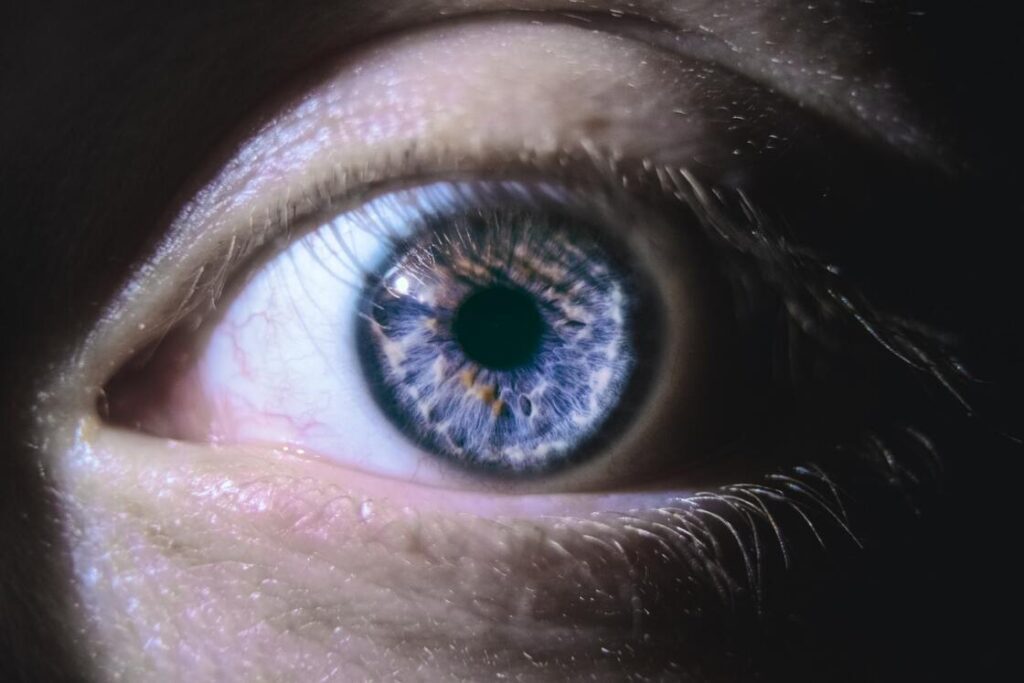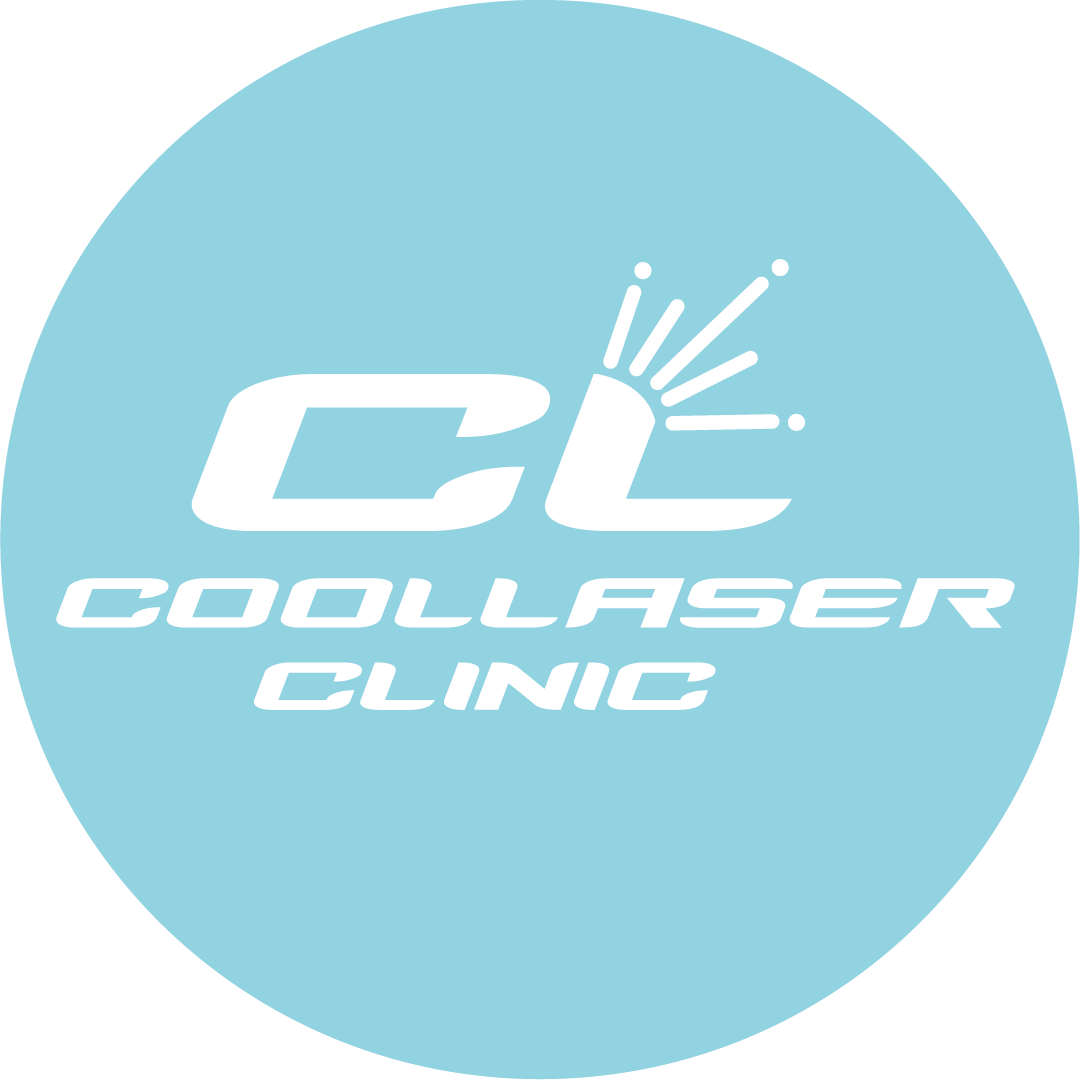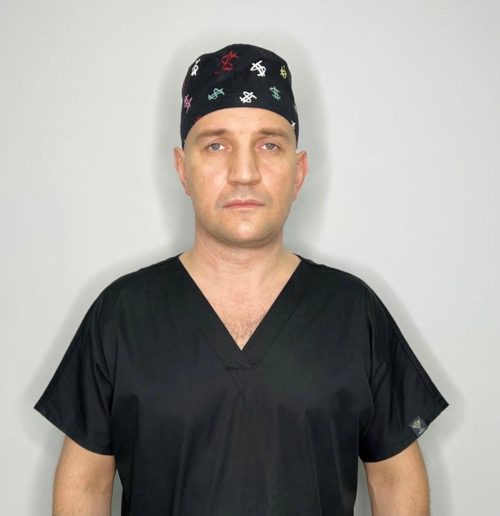Optic atrophy treatment with stem cells in Kiev
Optic atrophy treatment with optic stem cells is one of the most effective ways of vision correction. Complete or partial atrophy of the optic nerve affects significantly the quality of life, affecting virtually all aspects of human activity.
Eyes and vision are one of the three main sense organs for collecting and processing information from the world around us. That’s why it’s so important to take care of your eyes from a young age and see a doctor at the first alarming symptoms.

The doctors of the Coolaser Clinic have the necessary experience and knowledge as well as the modern medical technology for the effective treatment.
Contents:
About optic atrophy
Stem cell therapy
Sources of stem cells
Reviews about the treatment of optic atrophy SC
The problem of optic atrophy treatment
Experience of optic atrophy treatment in the Kulaser Clinic
How optic atrophy is treated at Coolaser
Frequent questions about optic atrophy treatment
What is optic atrophy?
There are many processes that are involved in transforming the information from the environment into a clear picture. A major role in this plays the optic nerve.
As a result of a variety of factors, the optic nerve can atrophy, that is, cease to perform its functions. Chronic diseases, pathological changes, injuries – all this can lead to atrophy of the optic nerve.
Fig. 1. The optic nerve.
How the optic nerve works
Currently there is no 100% treatment for optic atrophy of the optic nerve. Innovative stem cell therapies have shown excellent results and a high percentage of improvement in vision.
Learn more
Important things about optic atrophy
Medical science knows these facts about the disease:
It is not an independent disease. It almost always develops on the background of other disorders and is characteristic of any age.
Atrophy is a partial destruction of the nerve fibers of the optic nerve, which is expressed by a partial loss of vision (reduced visual field) and leads to complete blindness.
Men and people over the age of 50 are more often affected, but it can also develop in childhood.
If atrophy of the optic nerve fibers is not treated, the atrophy spreads to the remaining fibers, and they die. As a consequence: a person ends up with vision loss and goes completely blind.
Treatment with stem cells
Treatment of optic atrophy with stem cells (SC) has shown good results in practice:
improvement in vision by 15-30%, depending on the degree of the disease;
Restoration of the ability to distinguish colors;
In some cases it is possible to restore vision up to 90%.
Treatment is strictly selected by a doctor in personal consultation with the patient. The doctor will examine the tests and examinations, as well as gather the necessary anamnesis.
Therapy with stem cells is carried out by the course. The duration and composition of the course is determined by the doctor only.
Stem cell transplantation
1 hour before the surgery. Dr. Kovalchuk Andrey Olegovich during the introduction of the therapeutic dose of MSCs
What you need to know about this method of treatment:
The therapy is performed with MSC stem cells.
The introduction of the drug takes place in the consciousness of the patient under local anesthesia.
The procedure is virtually painless.
Application of microstitches at the end of the procedure.
Treatment with antiseptics.
Reddening of the eye is possible on the 1st day after injection, and completely passes by the 3rd day.
Cell therapy for optic atrophy
During surgery at the Coolaser Clinic. The surgeries were performed by Dr. Gavriluk S.G. and Dr. Kovalchuk A.O.
Sources of SC
Doctors more often use two sources for stem cell injections or transplants:
Donor (hematopoietic stem cells). These cells are obtained from the umbilical cord blood of the donor.
Proprietary MSCs. The patient’s own stem cells can be obtained from bone marrow or adipose tissue.
Stem cell transplant surgery
After surgery in the Coolaser Clinic operating room. On the left – Dr. Kovalchuk, on the right – Dr. Gavrilyuk.
Interesting facts!
Why we use mesenchymal stem cells:
MSCs (mesenchymal stem cells) easily divide and self-renew.
Among other types of stem cells, MSCs are ideal for transplantation for optical neuropathies and optic nerve atrophy.
There are practically no adverse reactions.
MSCs are obtained from the patient’s own adipose tissue or bone marrow
Mesenchymal cells have regenerating and immunostimulating properties.
The treatment is suitable for patients of any age with any form and degree of atrophy.
Reviews of optic atrophy treatment with stem cells
The feedback from patients with optic atrophy after MSC transplantation speaks for itself. Some patients have regained 30% of lost vision, while others have regained the ability to distinguish colors.
Make an appointment
Treatment of optic atrophy: reviews of real patients
After surgery, many leave positive reviews. For example, this patient thanked doctors for the 20% improvement in the condition of the right eye.
Result of optic atrophy treatment
Patient testimonial: “My vision started coming back to me!!! Thank you!”
The problem of optic atrophy treatment
This condition can be caused by the following pathologies
Infectious diseases;
Craniocerebral injuries of the brain;
Mechanical damage to the eyelid;
Neurodegenerative and autoimmune diseases (multiple sclerosis, etc.).
As a rule, patients are referred to ophthalmologists. In most cases, this disease is veiled by clinical symptoms of other associated diseases and not diagnosed in time.
Often, ophthalmologists do NOT undertake to treat optic atrophy. The reason is that there are currently no medicines and no effective treatment protocols for this disease.
The only treatment that the scientific community has high hopes for is cellular regenerative therapy.
Our experience in treating optic atrophy with stem cells
Over the last few years we have been successfully treating the disease using preparations of mesenchymal stem cells. More than a dozen patients have had positive treatment results.
The course of therapy included repeated systemic injections of MSC preparations, as well as local subcutaneous and peribulbar injections of cell suspensions. These injections were carried out in the affected area, in the areas close to the eye.
The results of treatment were observed within 6-12 months from the beginning of treatment.
We also observed the long-term results within 24-36 months from the moment of treatment.
How optic atrophy is treated in Coolaser Clinic
In the course of treatment we use different protocols for correction of the disease. Our practical experience has shown that combined treatment according to the protocol developed by us is the most effective and less traumatic.
The standard treatment regimen included threefold and sometimes fivefold systemic intravenous injections. At the rate of 1 MLN of stem cells per kilogram of body weight, as well as local subtenon injections of cell suspensions in the affected area in an amount from 2x to 5 MLN.
As a rule, the cell suspension is injected intravenously, as well as in the area behind the eyeball. Stem cells get to the affected area, where they transform into atrophied fibers and restore their functions.
The peculiarity of our treatment course was that we tried to choose a gentle mode of repeated local injections.
As a rule, repeated injections were carried out every 7 days after the procedure.
Such a minimally traumatic technique was justified by the fact that in the post-injection period of the first 3-7 days the patients had a slight edema of the surrounding tissues to the injection area, as well as redness of the cornea.
In some cases, the swelling bothered the patient for up to 15 days, so we postponed the re-injection procedure for that period. So, the re-injection was postponed for 15 days instead of 7 days.
Frequent questions about optic nerve cell therapy (FAQ):
What is the optic nerve?
The optic nerve is a pair of nerves that transmit signals from the eye to the brain.
What causes optic nerve atrophy?
Optic nerve atrophy can be caused by various factors such as trauma, infection, genetic factors, etc.
What is optic atrophy?
Optic atrophy is a condition in which the nerve fibers of the optic nerve die off, resulting in visual impairment.
Can visual acuity after optic nerve atrophy be restored?
Unfortunately, restoring visual acuity after optic nerve atrophy can be very difficult. However, starting treatment early can help slow the progression of the disease.
What is the visual field?
The visual field is the area that a person can see without moving the eyes.
What are stem cells?
Stem cells are cells that can differentiate into different types of cells in the body. They have the potential to be used to treat a variety of conditions, including optic atrophy.
How is optic atrophy treated with stem cells?
When using stem cells to treat optic atrophy, the cells are injected into the affected area, where they can help repair damaged nerve fibers. This can improve optic nerve function and visual acuity.
What is optic atrophy and what are its symptoms?
Optic nerve atrophy is a condition in which optic nerve fibers die off, resulting in visual impairment. Symptoms may include loss of vision, narrowed visual field, decreased visual acuity, etc.
How is optic nerve atrophy treated with cell therapy?
Cell therapy uses cells to replace or repair damaged tissue in the body. When treating optic atrophy with cell therapy, stem cells are injected into the affected area where they can help restore optic nerve function.
What are the results of treating optic atrophy with stem cells or cell therapy?
Results can vary depending on many factors, including the cause of optic atrophy and the extent of the damage. However, the use of stem cells and cell therapy can improve optic nerve function and visual acuity.
Can optic atrophy lead to vision loss?
Yes, optic atrophy can lead to vision loss. Therefore early treatment is very important to prevent the progression of the disease and preserve vision.
What should I do if I have symptoms of optic atrophy?
If you have symptoms of optic atrophy, it is necessary to contact an experienced ophthalmologist for professional consultation and treatment. Optic atrophy treatment in Kiev with the help of stem cells and cell therapy is an effective method, which can help restore the functions of the optic nerve and visual acuity.
How long does treatment of optic atrophy with stem cells or cell therapy last?
The length of treatment can vary depending on many factors, including the cause of optic atrophy, the extent of the damage, and the treatment methods. It can range from 2 x to 3 months, to a year or more. A consultation with an ophthalmologist can help determine the optimal length of treatment for your particular case.
What are the side effects of stem cell or cell therapy?
Side effects can vary depending on many factors, including the type of cells, the dose, and the methods of administration. However, stem cells are usually well tolerated by patients and side effects may be minimal.
What are the chances of complete visual recovery after optic atrophy treatment?
The chances of a full visual recovery after optic atrophy treatment may be low. However, starting treatment early can help slow the progression of the disease and preserve the remaining visual acuity.
Can optic atrophy be prevented?
Some causes of optic atrophy, such as injuries, infections, and genetic factors, cannot always be prevented. However, a healthy lifestyle, regular preventive examinations by an ophthalmologist and timely treatment of other diseases can help reduce the risk of developing optic atrophy. It is also important to avoid injuries and other risk factors that can damage the optic nerve.
What other treatments are available for optic atrophy?
In addition to stem cells and cell therapy, other treatments are available, such as laser therapy, hormone therapy, and others. A consultation with an ophthalmologist will help determine the best method of treatment for your particular case.
What are the visual fields and what problems can arise when they are disturbed?
Visual fields are areas that a person can see without moving the eyes. Impaired visual fields can lead to narrowing of the field of vision, blindness in certain areas, and other vision problems.
What other diseases can lead to optic nerve impairment?
In addition to optic atrophy, other conditions such as glaucoma, diabetic retinopathy, and others can also lead to optic nerve impairment.
What is visual acuity and how can it be measured?
Visual acuity is the ability to distinguish small details in an image. It can be measured by using special charts that show letters or numbers in different sizes and contrasts.
What other methods can help keep the optic nerve healthy?
It is important to lead a healthy lifestyle, including a proper diet, moderate physical activity, and regular preventive examinations by an ophthalmologist. Smoking, contact lenses, and other risk factors that can damage the optic nerve can also be avoided.
How often should I be examined by an ophthalmologist?
It is recommended that you have preventive check-ups with an eye doctor at least once a year, especially if you are at risk of developing eye diseases such as optic atrophy, glaucoma, diabetic retinopathy and others.
How can I determine my risk of developing optic atrophy?
The risk of developing optic atrophy can be related to various factors such as heredity, age, injuries, and other diseases. A consultation with an ophthalmologist will help determine your individual risk and recommended methods of prevention.
What are electrophysiological techniques and how can they be used to treat eye disease?
Electrophysiological techniques are methods that are used to measure electrical activity in the tissues of the eye and brain. They can be used to diagnose and treat various eye conditions such as optic atrophy, glaucoma and others.
Are injections near the eye painful?
The procedure is performed under local infiltration anesthesia. This anesthesia involves the application of a 33G micro-needle into the outer tissues of the lower eyelid. After this preliminary microinjection, no pain is felt when the cells are injected.
Were there any cases of visual impairment after SC injections?
Sometimes, due to a pronounced edema, patients felt a few percentage points of visual impairment for 2-3 days. After the swelling subsided, the situation returned to its previous level, and then within a month, vision improved.
Do stem cells sometimes not work?
In cases of long-standing pathology of more than 20 years, age groups of patients (senile age), total damage of the optic nerve, stem cell therapy was ineffective. Improvement was observed insignificantly from 1 to 2 percent, which we regarded as an ineffective method of treatment.
The cost of optic atrophy treatment
The treatment price depends on the clinical situation and varies from 30,000 to 99,000 UAH. The following packages are most commonly used:
“Local therapy”
Standard
Standard PLUS
Premium MAX
Contraindications for cell therapy
A course of Cellular Nerve Atrophy Therapy has almost no contraindications. To identify individual contraindications, it is necessary to undergo a consultation with a doctor.
The main restrictions include :
malignant tumors,
epilepsy,
Infectious diseases in the active phase,
Pregnancy and lactation.
Treatment of optic atrophy with stem cells is an innovative possibility to restore lost vision.
To make an appointment for consultation you can leave your request on the website or call (068) 938 03 03. Doctors of the Kulazer Clinic provide prevention and treatment of optic atrophy by means of stem cells at the address: Kiev, Pechersk district, 32B Konovalts Street.
To calculate the cost of the procedure “Treatment of optic atrophy”.
Leave your contact information and we will contact you for an estimate of the procedure
Treatment of Optic Nerve Atrophy
Sources:
MAYO Research Clinic
HelthLine – medical online magazine)
THE PRICE OF OPTIC ATROPHY TREATMENT
Standard Program. Treatment with own stem cells of adipose tissue. Therapy with autologous MSC (60 million). Program of two-stage systemic injection. (Single dose of 30 mln., re-injection – in 5 days).
58 000 UAH Sign up
The program “Local therapy”. Local injection of autologous stem cells of own adipose tissue. Local therapy with autologous MSC (30 mln)
30 000 UAH Enroll
Standard Plus Program. Allogeneic treatment with MSC (systemic injection of 100 mln). The program is a two-stage treatment. (A single dose of 50 mln, repeated injections of 50 mln – after 5-10 days).
99 000 UAH Make an appointment
Premium MAKS program. Cell transplantation of fetoplacental complex suspension. Four-stage program of administration (systemic injection three times intravenously, two times subcutaneously). Program of accelerated treatment with high doses of combined preparations of stem cells.
420 000 UAH Enrollment
Sign up for a consultation






